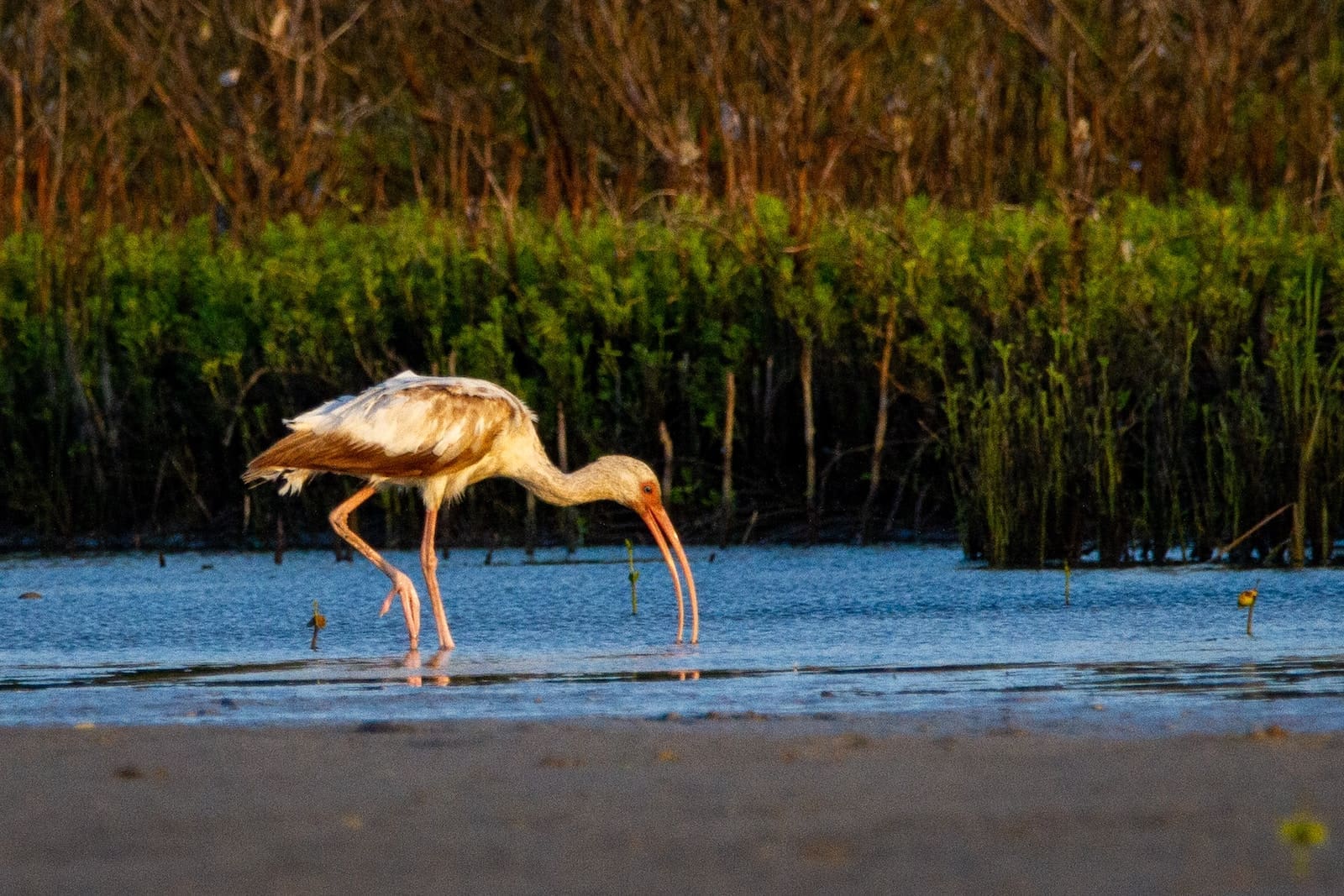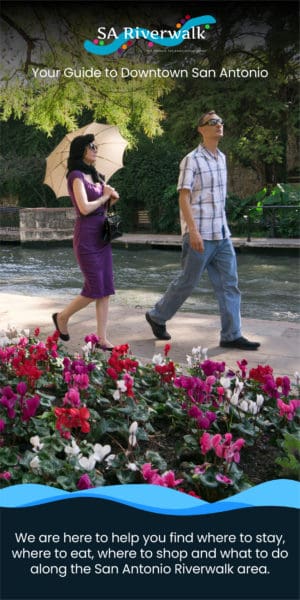
Protecting and Preserving the Gulf Coast’s Ecosystem
Corpus Christi, located in the southern part of Texas, is a city that is well-known for its beautiful beaches, warm weather, and abundance of marine wildlife. The city is home to a number of organizations and facilities dedicated to the conservation and protection of marine wildlife, making it a hub for marine conservation efforts in the region.
One of the most prominent organizations in Corpus Christi dedicated to marine wildlife conservation is the Texas Sealife Center. The center’s mission is to rescue injured or stranded coastal and aquatic wildlife, and provide supportive care and rehabilitation for these animals. The Texas Sealife Center is equipped with state-of-the-art facilities and a team of experienced professionals who work tirelessly to ensure that marine wildlife in the region is protected and cared for.
In addition to the Texas Sealife Center, Corpus Christi is also home to the Port of Corpus Christi Center for Wildlife Rescue, which is the biggest coastal wildlife rescue center in Texas. The center is open to the public and provides visitors with a unique opportunity to learn about marine wildlife conservation efforts and witness the rehabilitation of injured animals firsthand. The center is equipped with a state-of-the-art hospital for marine mammals and sea turtles, and is staffed by a team of highly skilled professionals who are dedicated to the conservation and protection of marine wildlife in the region.
Texas Coastal Wildlife
The Texas coast is home to a diverse range of habitats that support a wide variety of wildlife species. The Texas Parks and Wildlife Department (TPWD) is responsible for managing and conserving these habitats and the species that depend on them. Here are some of the key habitats and species found along the Texas coast:
Habitats
- Beaches and Dunes: Texas has over 350 miles of sandy beaches and dunes that provide important nesting habitat for sea turtles and shorebirds.
- Estuaries: Estuaries are where freshwater from rivers and saltwater from the Gulf of Mexico mix. These habitats are critical nursery areas for many fish and shellfish species, including shrimp, oysters, and redfish.
- Marshes: Salt and freshwater marshes are important habitats for a variety of wildlife, including birds, fish, and mammals. They also provide protection from storms and erosion.
- Coral Reefs: The Flower Garden Banks National Marine Sanctuary is home to some of the most pristine coral reefs in the Gulf of Mexico. These reefs support a diverse array of marine life, including sea turtles, sharks, and colorful fish.
Species
- Sea Turtles: Five species of sea turtles can be found in Texas waters, including the critically endangered Kemp’s Ridley.
- Shorebirds: The Texas coast is an important stopover for migrating shorebirds, including the threatened Red Knot.
- Fish and Shellfish: The Texas coast supports a diverse fishery, including redfish, flounder, and speckled trout. Oysters, shrimp, and blue crabs are also important commercial and recreational species.
- Marine Mammals: Several species of marine mammals can be found in Texas waters, including bottlenose dolphins, manatees, and several species of whales.
In conclusion, the Texas coast is home to a diverse range of habitats and species that are important for both ecological and economic reasons. It is important to manage and conserve these resources for future generations.
Significant Marine Species
The Texas Gulf Coast is home to a diverse range of marine life. Here are some of the significant marine species found in the Corpus Christi area:
Fish and Aquatic Life
The Coastal Bend area is renowned for its excellent fishing opportunities. Red drum and spotted seatrout are two of the most popular game fish found in the coastal waters of Texas. Other species of fish that can be found in the area include flounder, sheepshead, and black drum. The Texas Parks and Wildlife Department manages the fish populations in the area to ensure sustainable fishing practices.
Bird Species
The Texas Gulf Coast is a critical stopover point for migratory birds. The area is home to a wide variety of waterfowl, shorebirds, and seabirds. One of the most notable bird species found in the area is the piping plover, which is an endangered species. The Texas Parks and Wildlife Department works with various organizations to protect and conserve the bird populations in the area.
Endangered Species
Several endangered species call the Corpus Christi area home. One of the most notable is the ocelot, a small wild cat that is native to the area. The Texas State Aquarium collaborates with Texas A&M University-Corpus Christi to research and conserve the ocelot population. Sea turtles and sharks are also endangered species found in the area. The Texas Parks and Wildlife Department implements various conservation measures to protect these species.
In conclusion, the Corpus Christi area is home to a diverse range of significant marine species. It is important to ensure that these species are protected and conserved for future generations to enjoy.
Conservation Efforts
Corpus Christi Texas has a long history of marine wildlife conservation, and many organizations are working hard to protect, manage, and enhance the local ecosystems. In this section, we will explore the conservation efforts of these organizations and their impact on the local environment.
Protect and Enhance
One of the main goals of marine wildlife conservation is to protect and enhance the natural habitats of marine animals. The Coastal Conservation Association (CCA) is one such organization that is dedicated to protecting and enhancing the marine habitats of Texas. The CCA works with local communities to identify and protect critical habitats, such as seagrass beds and oyster reefs, which provide important breeding and feeding grounds for many marine species.
Rescue and Release
Another important aspect of marine wildlife conservation is rescue and release. The Texas State Aquarium’s Wildlife Rescue Center is the largest coastal wildlife rescue facility in Texas and one of the largest in the U.S. The center is permitted to treat marine mammals, raptors, shorebirds, and sea turtles and can accommodate thousands of animals at any given time. The center’s team of experts provides medical care, rehabilitation, and release services to injured, sick, and orphaned animals.
Education and Outreach
Education and outreach programs are essential to marine wildlife conservation efforts. The Texas State Aquarium offers a variety of educational programs for students of all ages, including STEM-based programs, field trips, and interactive exhibits. These programs aim to educate the public about the importance of marine conservation and inspire the next generation of conservationists.
In addition to the Texas State Aquarium, other organizations such as The Nature Conservancy in Texas and the Texas Parks & Wildlife Department also offer educational programs and resources to help raise awareness about marine conservation.
Overall, the conservation efforts of these organizations are crucial to the protection and preservation of marine wildlife in Corpus Christi Texas. By working together to protect, manage, and enhance the local ecosystems, these organizations are helping to ensure that future generations can enjoy the natural beauty and diversity of the Texas coast.
Marine Wildlife Centers
There are several marine wildlife centers in Corpus Christi, Texas that are dedicated to the conservation and rehabilitation of coastal and aquatic wildlife. These centers offer tours, educational programs, and opportunities for donation to support their important work.
Texas State Aquarium
The Texas State Aquarium is a nonprofit organization and the largest aquarium in Texas. It is dedicated to promoting environmental conservation and rehabilitation of marine wildlife. The aquarium offers tours and educational programs for visitors of all ages. It is also a member of the Association of Zoos and Aquariums (AZA), which is a testament to the high standards of animal care and conservation efforts at the aquarium.
Texas Sealife Center
The Texas Sealife Center is a nonprofit organization that is dedicated to the rescue, rehabilitation, and release of coastal and aquatic wildlife. The center provides supportive care and rehabilitation for injured or stranded wildlife. It also offers tours and educational programs for visitors. Donations to the Texas Sealife Center are critical to support their efforts in wildlife conservation and rehabilitation.
Sea Center Texas
Sea Center Texas is a marine aquarium, hatchery, and education center that is located in Lake Jackson, Texas. It is dedicated to the conservation and management of coastal and aquatic resources. The center offers tours and educational programs for visitors of all ages. It also provides opportunities for donation to support their efforts in marine wildlife conservation.
In conclusion, these marine wildlife centers in Corpus Christi, Texas are doing important work in the conservation and rehabilitation of coastal and aquatic wildlife. They offer tours, educational programs, and opportunities for donation to support their efforts. Whether you’re in Houston, Galveston, or anywhere in Texas, these centers are worth a visit to learn more about the importance of marine wildlife conservation.
Conservation Challenges and Solutions
Habitat Degradation
Habitat degradation poses a significant threat to marine wildlife in Corpus Christi, Texas. As the population grows and water demands increase, water flow in rivers and streams may decrease, which affects the ecosystems, habitats, and wildlife that depend on the natural flow regime of the stream or river. Additionally, habitat degradation caused by human activities such as dredging, filling, and shoreline development can destroy critical habitats for marine wildlife.
To address habitat degradation, the Texas Parks & Wildlife Department (TPWD) has implemented the Coastal Management Plan, which aims to protect and restore coastal habitats. The plan includes initiatives such as marsh restoration, oyster reef restoration, and seagrass restoration. These efforts have helped to improve the quality of habitats for marine wildlife in Corpus Christi.
Fishing Pressure
Fishing pressure is another significant conservation challenge facing marine wildlife in Corpus Christi. Overfishing can lead to the decline of quality sport-fish species such as red drum populations. Additionally, fishing line and other fishing gear can cause entanglement and injury to marine wildlife.
To address fishing pressure, TPWD has implemented regulations such as size and bag limits, gear restrictions, and closed seasons. These measures aim to reduce fishing pressure on vulnerable populations and protect marine wildlife from the harmful effects of fishing gear.
Diseases
Diseases pose a significant threat to marine wildlife populations in Corpus Christi. Some diseases can cause mass mortality events, which can have devastating effects on populations.
To address diseases, TPWD works closely with researchers and wildlife health experts to monitor and respond to disease outbreaks. Additionally, TPWD has implemented regulations such as mandatory reporting of certain diseases to help prevent the spread of diseases among marine wildlife populations.
Pollution
Pollution is a significant threat to marine wildlife in Corpus Christi. Plastic pollution, in particular, is a significant problem, making up a large percentage of marine debris. Plastic waste can litter the ocean for hundreds of years, causing harm to marine wildlife that ingest or become entangled in it.
To address pollution, TPWD has implemented initiatives such as beach cleanups and public education campaigns to reduce plastic waste and other pollutants in the marine environment. Additionally, TPWD works with local communities and businesses to promote responsible waste management practices to reduce pollution in the marine environment.
Future of Marine Wildlife Conservation
Marine wildlife conservation in Corpus Christi, Texas, is essential to protect and preserve the natural resources and biodiversity of the area. The future of marine wildlife conservation in Corpus Christi is promising, with many ongoing and upcoming projects aimed at improving research, development, and community involvement.
Research and Development
Research and development are crucial components of marine wildlife conservation in Corpus Christi. The CCA/CPL Marine Development Center (MDC) is a state-of-the-art facility that conducts research on aquatic plants, hatchery operations, stock enhancement, and other projects related to the conservation and management of marine resources. The MDC is also involved in the rehabilitation and release of cold-stunned sea turtles and marine mammals.
Other research initiatives include studying the impact of recreational activities on marine wildlife and the effects of climate change on natural resources. These research efforts will provide valuable insights into the best ways to protect and conserve marine wildlife in the future.
Community Involvement
Community involvement is critical to the success of marine wildlife conservation in Corpus Christi. The Texas Sealife Center and the Texas State Aquarium are two organizations that play a significant role in educating the public about the importance of marine conservation. These organizations also provide opportunities for people to get involved in conservation efforts through volunteering and other activities.
The City of Corpus Christi also has several initiatives aimed at promoting community involvement in marine conservation. The Waldron Road Landfill Project is one such initiative that involves using treated wastewater to create wetlands that support aquatic wildlife. The project also includes educational programs for the public to learn about the importance of wetlands and their role in supporting biodiversity.
Overall, the future of marine wildlife conservation in Corpus Christi looks bright. With ongoing research, development, and community involvement initiatives, the area is well-positioned to protect and preserve its natural resources for generations to come.



